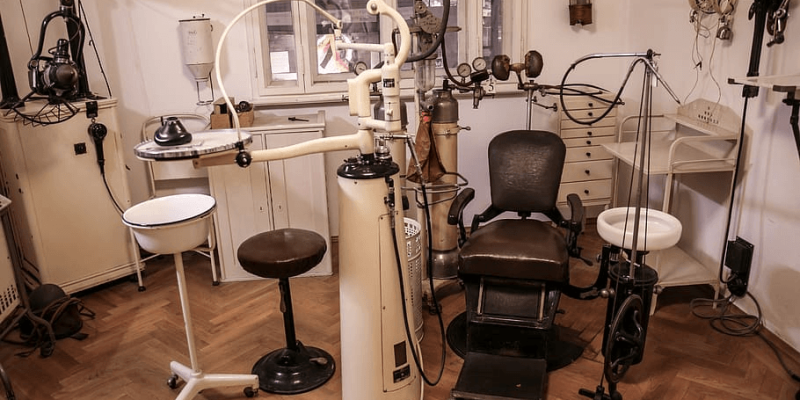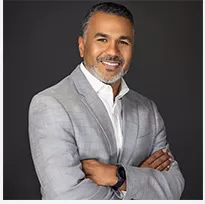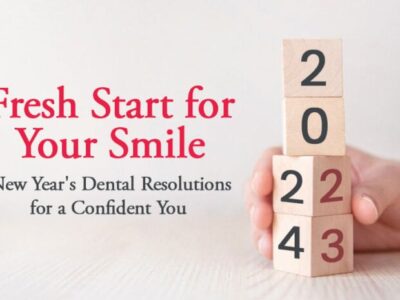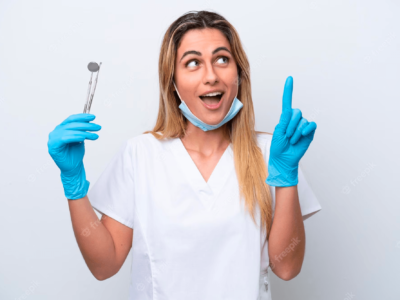Mitigating professional risk factors through technology & biomechanics
Keywords dental ergonomics, pain free dentistry, body biomechanics, body fitness.
If you’re a dentist, dental assistant, or hygienist, you’ve likely experienced some type of musculoskeletal pain, which usually starts in dental school 1. Rates of musculoskeletal pain in the dental profession are higher, more than 80%, no matter what country you practice in. 2. Research surveys published in different dental associations around the world generate similarly high percentages. 3

The dental profession is a profession of high mental and physical load. To be able to execute our work that demands precision, detail, administrative demand, customer service, controlled waiting times, patients with pain and anxiety, especially work on a surface, irregular, narrow, dark and surrounded by sensitive tissues, altogether places the dentist and his/her staff on the ramp of work stress, uncomfortable postures and the demand for a functional organizational scheme. 4

Table 1. Risk Factors to develop musculoskeletal disorders in dentistry
According to Brianne Novaes, a Certified Personal Trainer, these various risk factors lead to muscle imbalances and postural distortions that can be both reversed and prevented. “A muscle imbalance is when there is a lack of balance between functionally opposite muscle groups. Muscle protects bones, joints, tendons, and ligaments so it is important to proactively work on keeping muscles properly balanced by practicing good ergonomics and following a well-balanced exercise regimen.”
“In addition, muscle imbalances often lead to postural distortions which exacerbate poor posture and cause chronic pain. This is because, in an imbalance, some of the muscles become short and tight from being overused and other muscles become long and weak from being underutilized. While this can be corrected through proper exercise, if ignored, it will lead to injury and even surgery”.
Dental ergonomics is based on 4 pillars, among which are the use of elements designed to improve the operator’s posture, such as
- the surgical optical microscope
- the ergonomic chair
- the understanding and application of body biomechanics and
- applicable to the fourth pillar is the work with four hands – i.e. utilising an assistant.
Seeing it in a broad perspective, the four pillars are based on human and technological resources, which, with appropriate teaching and training base, generate synergy to change the work method and guide it towards stress-free, comfortable, efficient work that in the end produces quality work, focused on the LONG TERM.

Image 1. Dental Ergonomics four pillars concept. 1. The Microscope ; 2. The Stool; 3. The Assistant; and 4. Applied biomechanics.
Let’s break down this whole holistic concept of dental practice a bit. The human body is a perfect machine. If we understand how it works, we can get the best benefit from it, and be much more efficient. On the other hand, a tense, fatigued, sore body is a body that will not be able to help us perform faster or better, creating physical fatigue in less time and mental fatigue. The sitting work posture, an unnatural posture, is a posture that generates a high load of tension in the joints, in addition to the fact that said unnatural posture is sustained for a long time, placing the muscles in a great decrease in the flow of blood, oxygen and intramuscular pressure. 5
Pillar 1 – The Microscope
To further assist muscle groups highly fatigued by the prolonged sitting posture – characteristic of dentistry – the dental microscope plays a vital role in maintaining long-term health by bringing the operator closer to the correct posture by regulating eye-mouth working distances and improving visual capacity through the illumination of multiple magnification steps, compared to the use of loupes and naked eye dentistry. 6


Image 2. Naked Eye Body posture Vs Microscope Dentistry sitting posture
“A crucial area that aids in proper posture is the core musculature. The core is the center of our body, where every single movement throughout our day is initiated”, states Novaes. “Weak core musculature is the result of prolonged seating and/or forward lean. This often leads to forward head and rounded shoulders, which is referred to as the postural distortion known as upper crossed syndrome. This is often associated with neck and upper back pain”.
“In this distortion, the upper trapezius and pectoral muscles become short and tight while the mid and the deep neck flexors, as well as the mid and lower trapezius and the rhomboids, become long and weak. This is fixed by first releasing the tension in the upper trapezius and the pectoral muscles. Once this is completed, strengthening of the mid and lower trapezius, as well as the rhomboids are then implemented. This will alleviate upper back and neck pain and improve posture. Having a strong core will also help to stabilize the spine and prevent injury”
Pillar 2 – The Ergonomic Stool
Having the proper equipment in the operatory can help promote good posture to avoid muscular imbalances and postural distortions. The ergonomic stool is the most important chair in the office. At a biomechanical level, it gives support to the lower back, the arms, and improves the position of the pelvis by placing it in a healthy position that in turn respects the lumbar curvature so important for harmony of the spine and postural muscles.
Noveas says, “During prolonged periods of sitting, muscular imbalances in the lower extremities develop which can result in low back pain. This imbalance consists of short and tight hip flexors and erector spinae while the glutes and core muscles become weak. This is often referred to as the postural distortion known as ‘lower crossed syndrome’. This can be corrected by first releasing tension in the hip flexors and the erector spinae. This is then followed by strengthening the glutes and the core muscles. This will help fix this postural distortion and alleviate back pain”.

Image 3. Ergonomic Stool with convex lumbar support and telescopic orientation armrests
Both technologies, the microscope and the chair with ergonomic features are essential allies for the dentist, assistant, and hygienist to prolong their careers with minimal physical and mental fatigue. 7
Pillar 3 – The Assistant
Having a person to help you chair side, like an assistant, is called ‘four handed dentistry’. Four-handed dentistry enables more comfortable dentistry for the practitioner. It maximises teamwork and can reduce stress and increases job satisfaction. The benefit to the patient is achieved with increased patient comfort, decreased treatment times and improved quality of work. Benefits of having an assistant are:
1. Increase of efficiency of the dentist through the use of full-time trained assistants
2. Decrease in muscular stress
3. Increase in the dentist’s ability to concentrate skill and judgment on patient care
4. Increase production by 100%
5. Decrease in stress and fatigue by 50-70%
Pillar 4 – Applied Biomechanics
Within body biomechanics, both the study of movement (kinesis and kinetics) gives us guidelines to understand how we move the body, and the ranges of joint movement among other information of real importance, but it is equally important to understand how we can improve the personal physical aspect to help the postural muscles to resist longer working hours. 8
Body fitness improves the stamina and strength of the stabilizing and moving muscles that we frequently use in dentistry. By implementing an exercise plan that reduces tension in the short, tight muscles and strengthens long and weak muscles, postural distortions can be fixed. Through this type of exercise, muscles can be maintained at their optimal length to keep proper body alignment, optimal movement patterns, and healthy posture.

Table 2. Example of exercise plan to strengthen the body core muscles
References
1. Rising D W, Bennett B C, Hursh K et al. Reports of body pain in a dental student population. J Am Dent Assoc 2005; 136: 81–86
2. . Marshall E D, Duncombe L M, Robinson R Q et al. Musculoskeletal symptoms in New South Wales dentists. Aust Dent J 1997; 42: 240–246. Hayes M, Cockrell D, Smith DR . A systematic review of musculoskeletal disorders among dental professionals. Int J Dent Hyg 2009; 7159–165
3. Finsen L, Christensen H, Bakke M . Musculosceletal disorders among dentists and variation in dental work. Appl Ergon 1998; 29: 119–25.
4. Divaris K, Polychronopoulou A, Taoufik K, et al. Stress and burnout in postgraduate dental education. Eur J Dent Educ 2012; 16: 35–42.
5. AC. Mandal. The seated man (Homo Sedens) the seated work position. Theory and practice. Volume 12, Issue 1, March 1981, Pages 19-26
6. Ortiz et al. Rapid upper limb assessment (RULA) and Rodgers muscle fatigue analysis (RMFA) of dentists using optical microscope, loupes or no magnification during endodontic access. A pilot study. The XXXII nd Annual International Occupational Ergonomics and Safety Conference September 17-18, 2020
7. Van Niekerk SMS, Louw QQA, Hillier SS. The effectiveness of a chair intervention in the workplace to reduce musculoskeletal symptoms. A systematic review. BMC Musculoskeletal Disord 2012;13:14
8. Hazari et al. Principles of Kinetics and Kinematics on Human Body. Conceptual Biomechanics and Kinesiology (pp.49-52)
Author Name
Juan Carlos Ortiz Hugues DDS CEAS II, Brianne Novaes CPT
Author Biography
Juan Carlos Ortiz Hugues DDS CEAS, is a Master of the Academy of microscope enhanced dentistry, CEAS II and actual Vice President of the Academy of microscope enhanced dentistry AMED, writer of the book Ergonomics applied to dental practice. Efficient and painless dentistry and provides lectures, training and advice in the area of Advanced Dental Ergonomics Latin America and the United States, mainly related to ergonomics applied to dental microscopy.

Brianne Novaes has been a Certified Personal Trainer for 10+ years and has worked with thousands of clients of all ages ranging from teens to seniors. She has worked in multiple areas of fitness including personal training, semi-private training, group fitness, medical fitness, corporate wellness, and fitness center management. Her expertise is in strength training and building muscle to avoid pain and prevent injury. She also has vast knowledge in mobility, flexibility, and stability training. She is the Founder of Built by Brianne, a company that provides specialized strength programs for Dental Professionals.























Comments